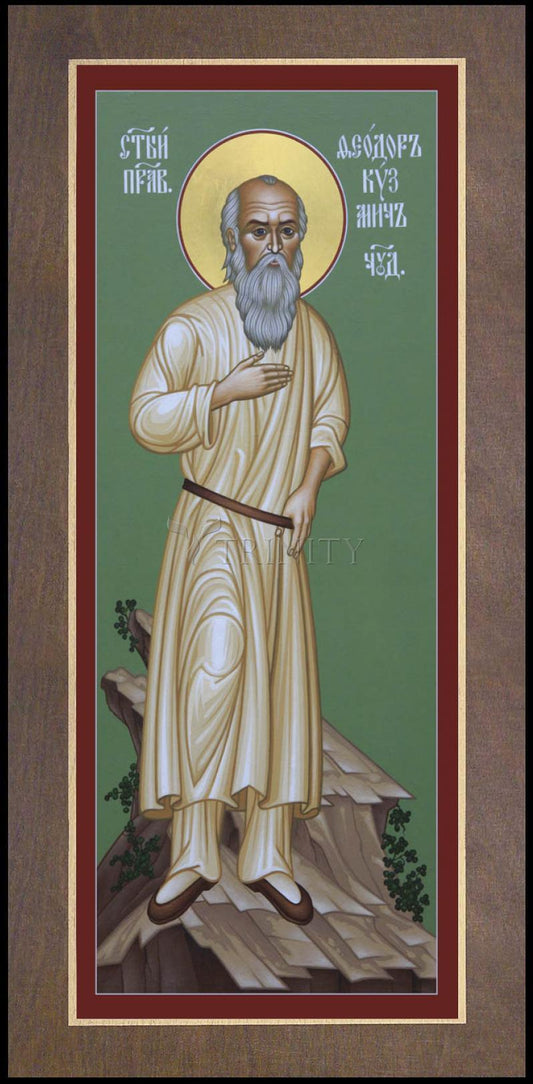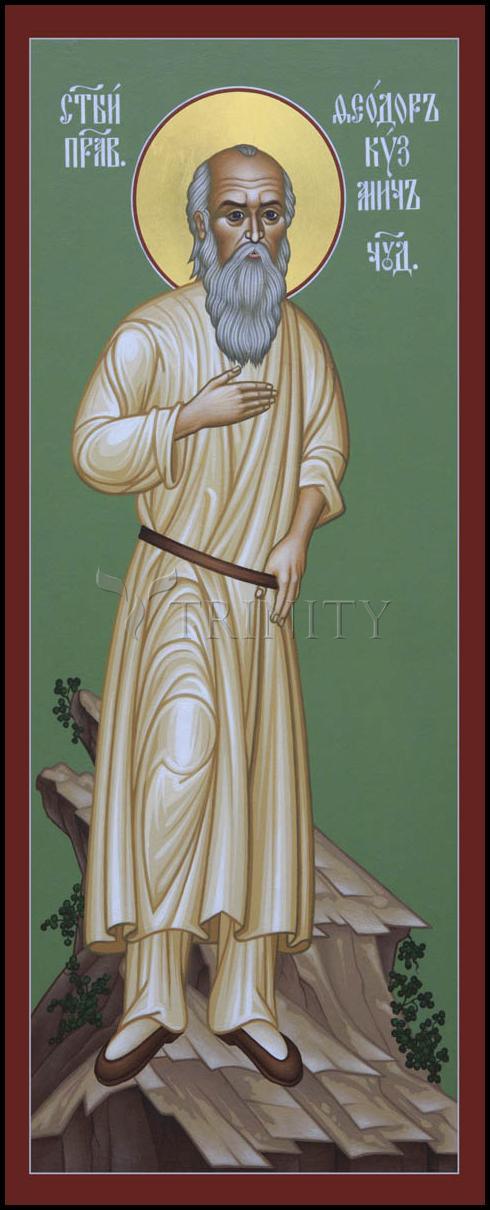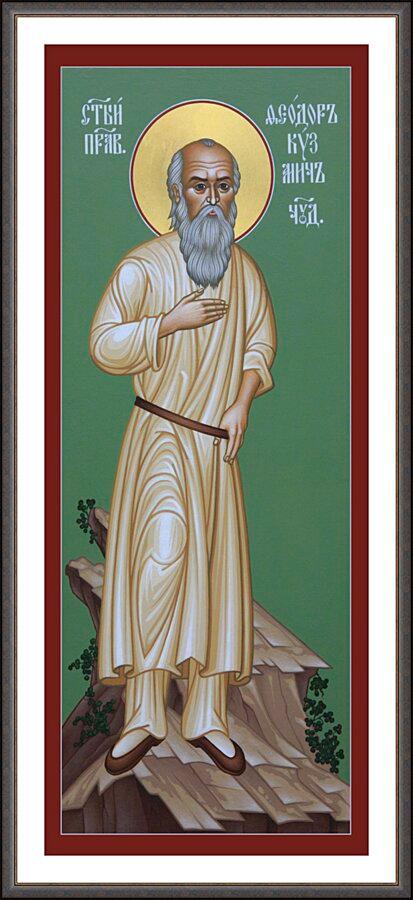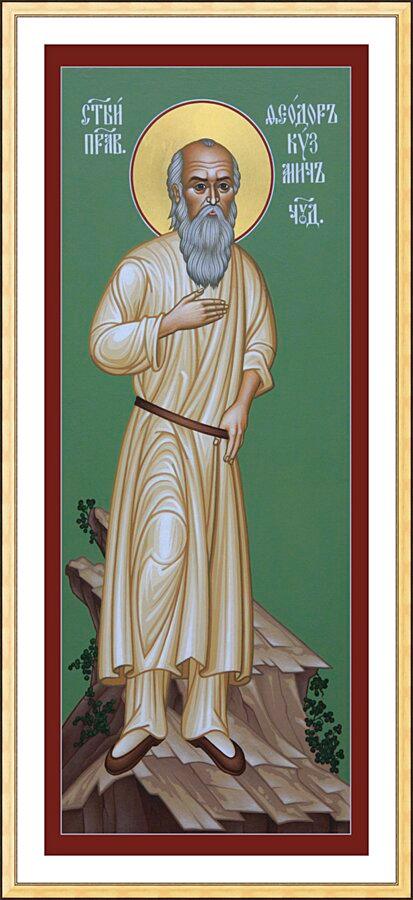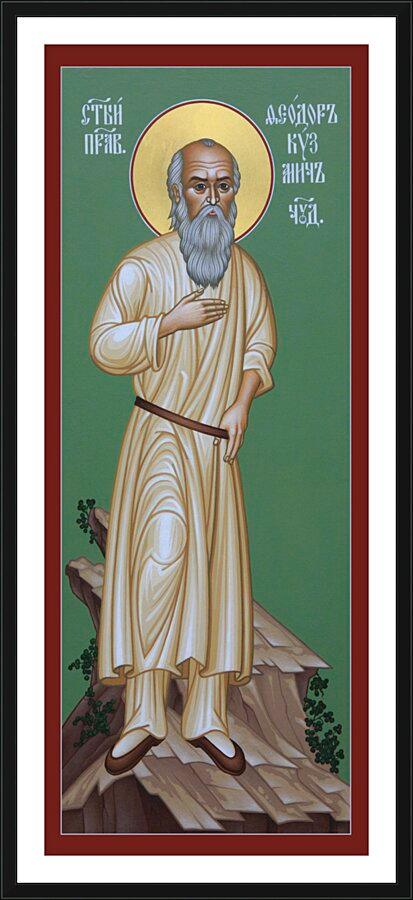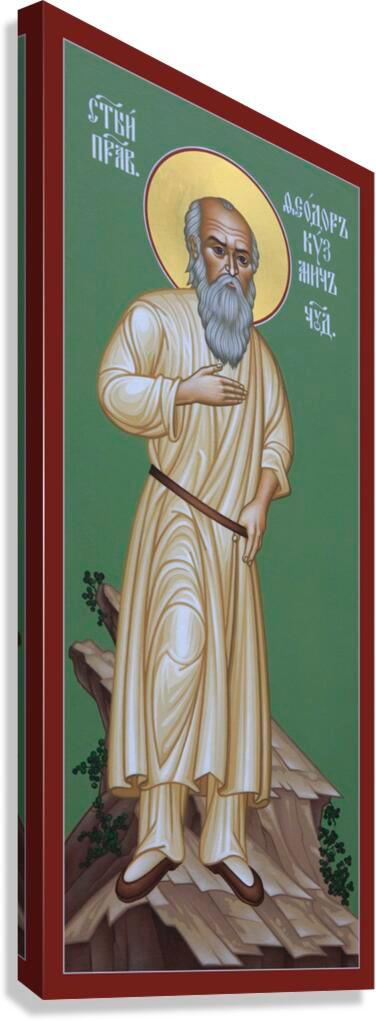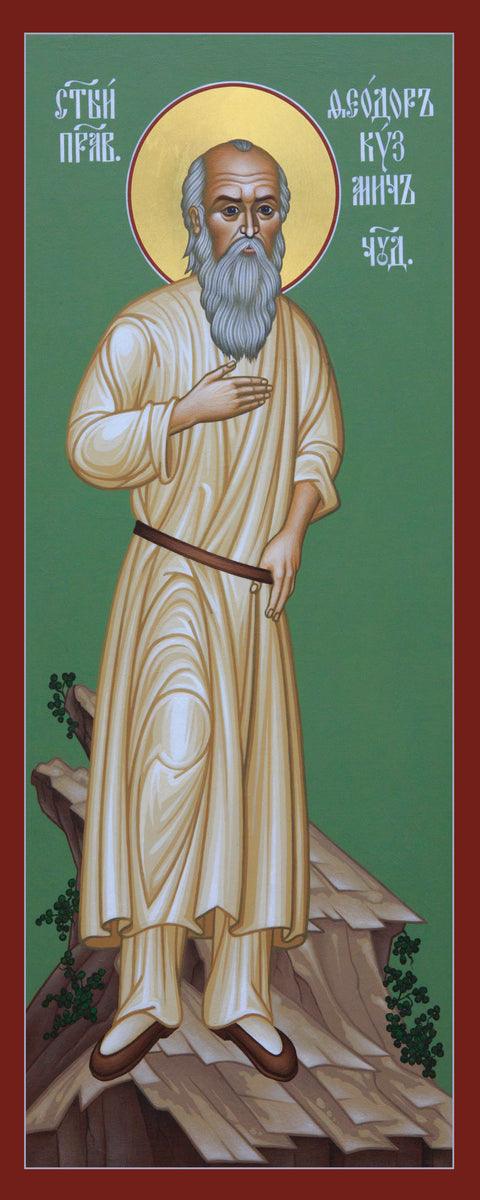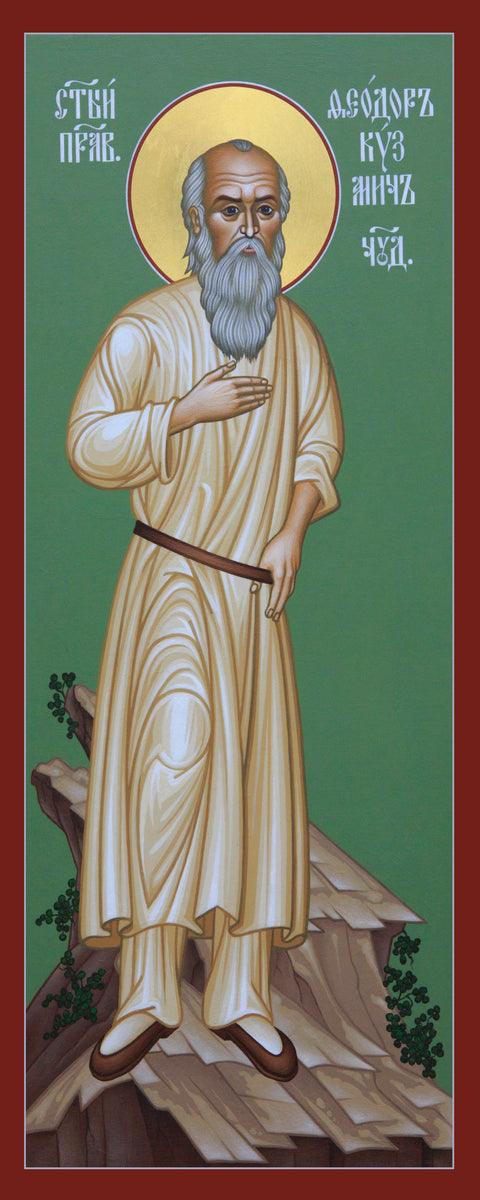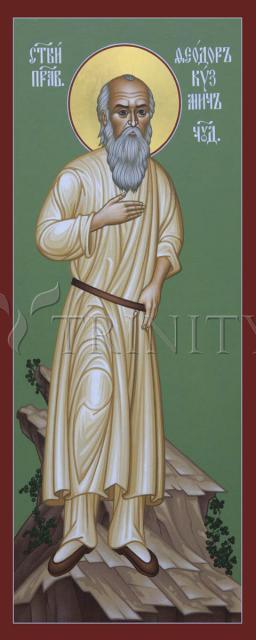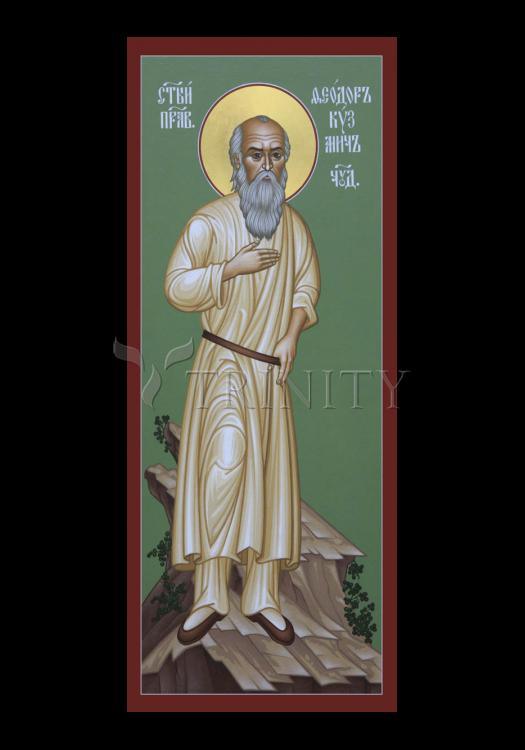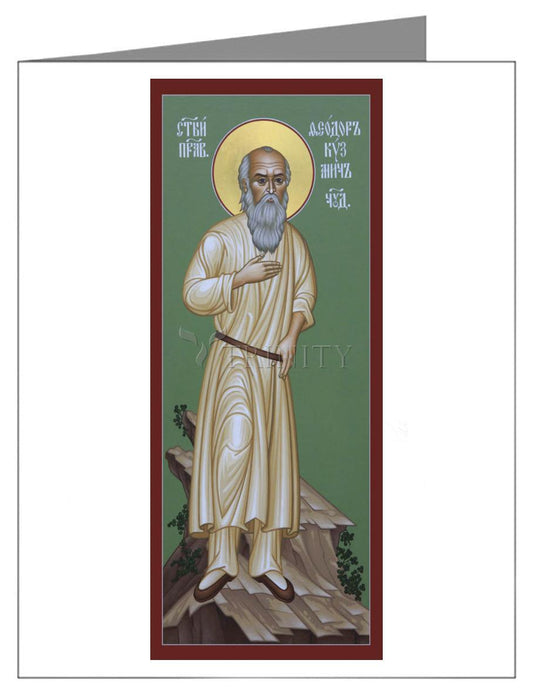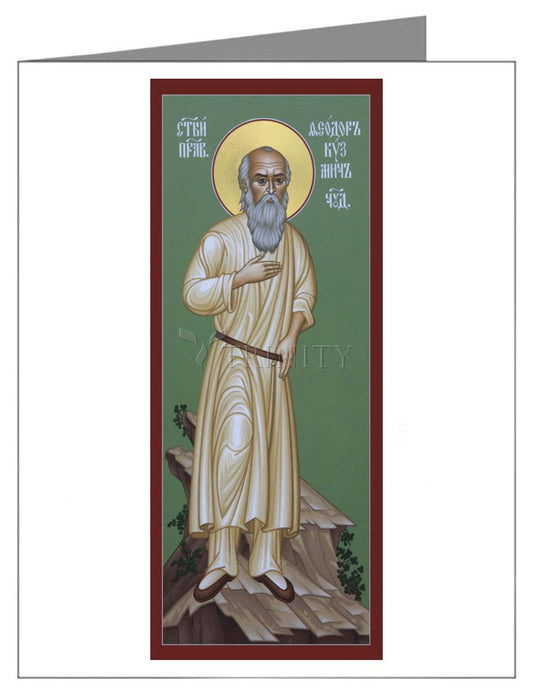Fyodor Kuzmich, also Feodor Kozmich, Theodore of Tomsk, or Fomich who died February 1, 1864, in Tomsk was a Russian Orthodox starets. He has been canonized as a righteous saint by the Russian Orthodox Church in 1984.
There is a well-documented legend that claims that he was in fact Alexander I of Russia who faked his death in 1832 to become a hermit. According to one account, he lived in a modest house with a garden; protected in a variety of ways by the Imperial Chancery, he received a visit from Alexander II in 1837 and his grave was visited by Nicholas II in 1893.
The first reliable information of the elder Theodore's life relates to the history of his settlement in Siberia. Near the city Krasnoufimsk of Perm province an unknown man driving horse harnessed to a cart was arrested. He had no documents and an old man called himself a wanderer. In September 1839 he was deported to Tomsk province. During this long deportment on Siberian roads Theodore Kuzmich by his behavior, active caring for the weak and sick convicts, warm and comforting talks won the favor not only of all the exiled but also of convoy soldiers and officers who also treated him with respect, protected him from troubles and gave him a special room for the night.
For the first time the old man had been living at a distillery in Krasnochensk but then he began to wonder to different villages in search of secluded place for prayers and away from human glory. For six years the saint pious Theodore lived in Tomsk. There he led a rough life full of spontaneous asperities. His home was a small cell with narrow windows and small hallway. The old man was sleeping on a bare board which was then upholstered with sackcloth at his instance. The hewn wooden block served as a pillow.
There were also a table and some benches for visitors in the cell. In the front corner there were icons, pictures with views of holy places which were presents of many admirers. The old man's clothes were quite simple. In summer he wore long white shirt made of village linen. He had only two shirts, belted with a thin strap or rope, and he wore wide trousers made of linen. In winter he put on a long dark-blue robe over the shirt or if he went out in the cold he put on the old faded Siberian fur-coat. There were corns on his knees because of endless prayers on bended knees. The St. pious Theodore was very abstemious in food. His lunch usually consisted of black bread or dried crusts soaked in plain water. For that reason there was always a little vessel made of birch bark and a wooden spoon in his cell.
Even during his life the old man had a gift of healing. People from different parts of the province came to him with various problems. And nowadays the saint of God doesn't leave those who prayerfully call for his help. Especially evident is the help from the saint elder's relicts which are kept in the Virgin-Alekseevsky monastery in Tomsk. In the cloister there is a special copy-book for keeping records of miraculous healings from the relics of the righteous Theodore of Tomsk. How much faith and hope for help of the saint elder is in them! And God through prayers of the righteous Theodore sends people healing from sufferings and illnesses showing a miracle of mercy to us sinners in our hard and troubled time."
The Elder moved to Tomsk on October 31st 1858. In the beginning he occupied the attic in Hromov's house, and later " a specially built for him cell in the woods, some 4 kilometers out of town. Later on, the merchant Semion Hromov built a special cell for Elder Fyodor in the garden near his house, where the latter lived out the end of his days in solitude, with rigid fasting and constant prayer.
The degree of care shown him was established by the zealot himself. So the lifestyle of the Elder in the town of Tomsk didn't much differ from the life he had led in his village retreat.
A local bishop Pyotr wrote: "The Elder partook very little of food and always limited himself to a lean diet: rye bread, cabbage soup with mushrooms, at times peas, and on big Orthodox feasts he allowed himself fish and eggs. Before lunch he always prayed at length and always made four prostrations: three to the Holy Trinity, and the fourth " to the Holy Mother of God. He had no bed to speak of " just a bunk near the stove without any mattress, without blanket, with a block of wood for a pillow.
Throughout the entire Tomsk period, just as was the case earlier, numerous miraculous happenings were linked with the Elder's dwelling. For example, the testimony of Bishop Pyotr mentioned above, who personally knew Elder Feodor and was the author of one of his biographies.
People who visited the Elder often sensed a remarkable scent in his cell " one that cannot be likened to any known perfume or aroma. Many also saw a light glowing in his cell at night, when it was a known fact that the Elder never lit either candles or icon-lamp in his dwelling, always choosing to remain in darkness. The Elder told merchant Hromov that even without a fire he always had light in his cell at nightfall.



